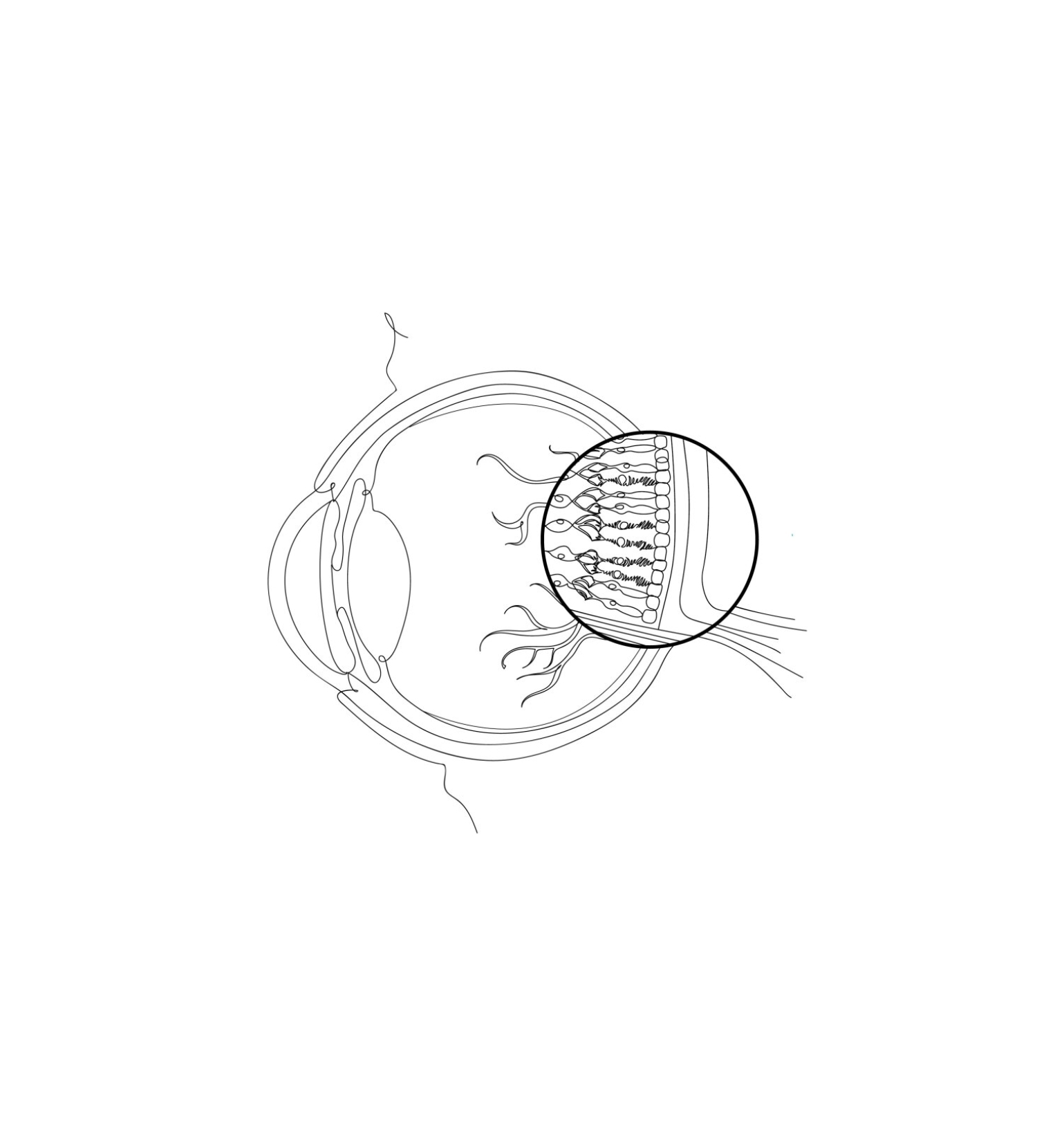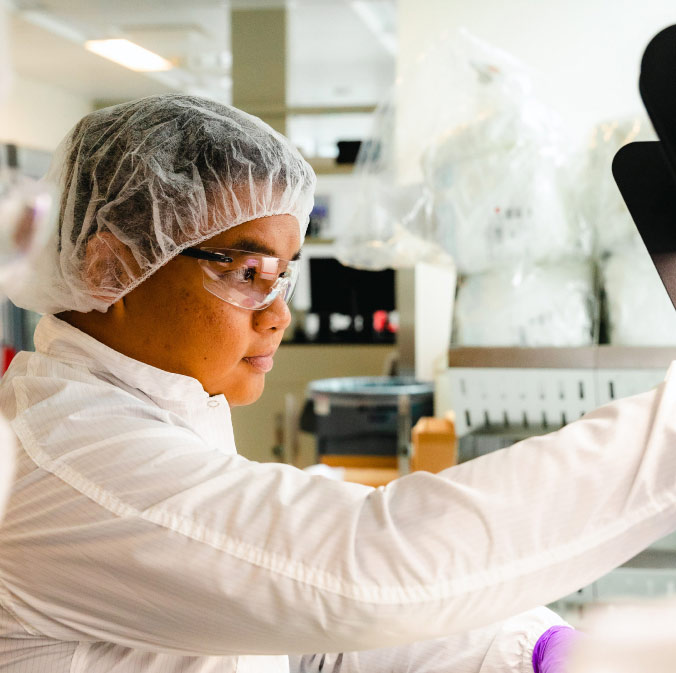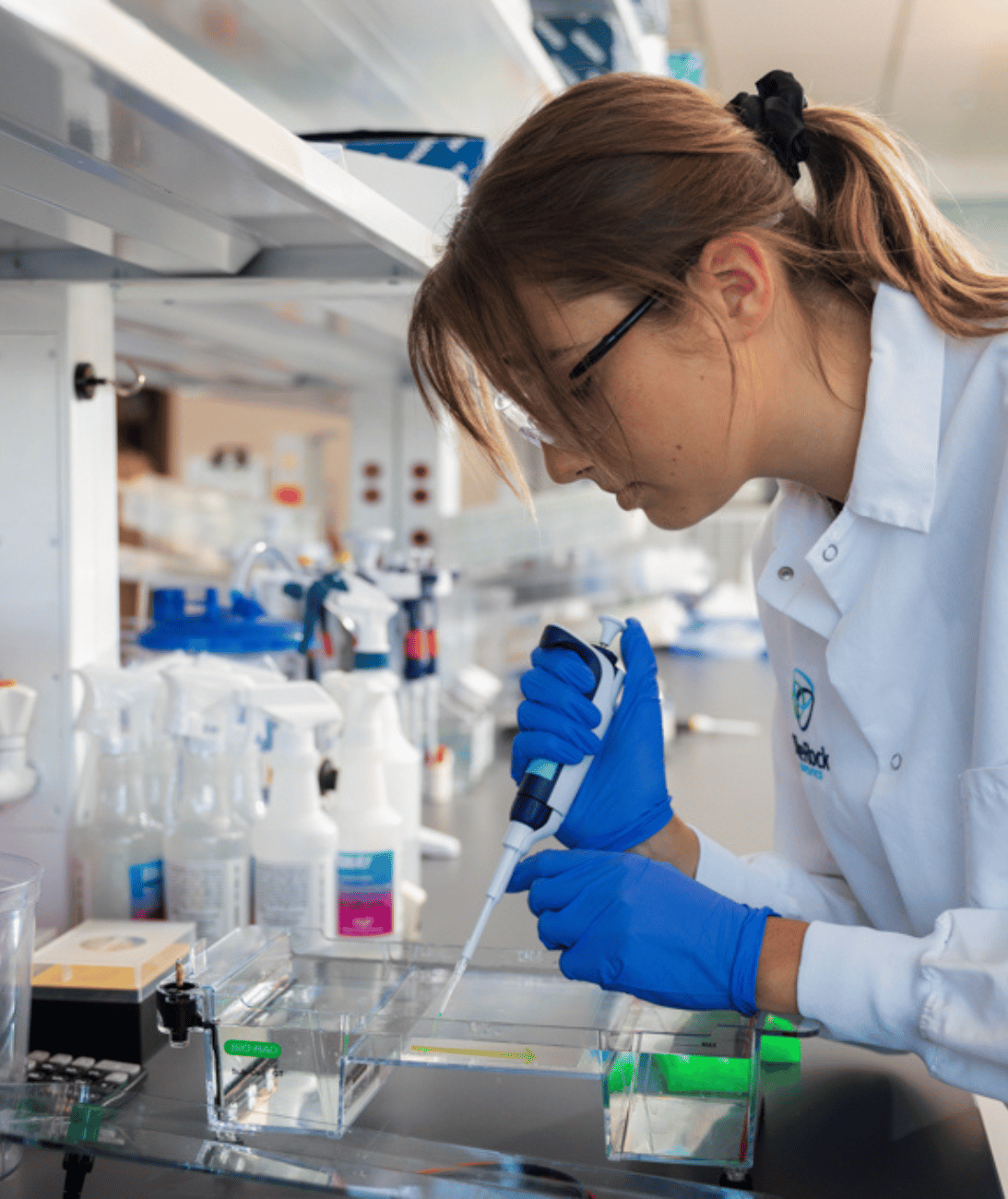Pioneering the treatment of Primary Photoreceptor Diseases
Loss of vision is devastating, affecting every aspect of a person’s life.
Photoreceptors are specialized cells that convert light into signals sent to the brain. Mutations in these cells can affect their ability to function properly, resulting in irreversible vision loss in both children and adults.

We’re working to change that
BlueRock’s lead ophthalmology cell therapy program, OpCT-001, aims to restore vision caused by these diseases by replacing degenerated tissue in the retina with functional cells. OpCT-001 is an induced pluripotent stem cell (iPSC) derived cell therapy candidate being explored for the treatment of primary photoreceptor diseases.

About Primary Photoreceptor Disease

Primary photoreceptor diseases are a subgroup of Inherited Retinal Diseases (IRDs). IRDs are a group of eye diseases, such as retinitis pigmentosa and cone and rod dystrophies, that are characterized by photoreceptor degeneration or dysfunction. It is estimated that between 4.5-6.8 million people worldwide are affected by an IRD.
Primary photoreceptor diseases specifically affect the structure and function of the photoreceptor cells (cones, rods) in the retina and comprise approximately 65% of all IRDs. No current treatment options exist for this patient population.
This program has been exclusively licensed from and is being developed in collaboration with Opsis Therapeutics, LLC/Fujifilm Cellular Dynamics, Inc and is currently in pre-clinical development.